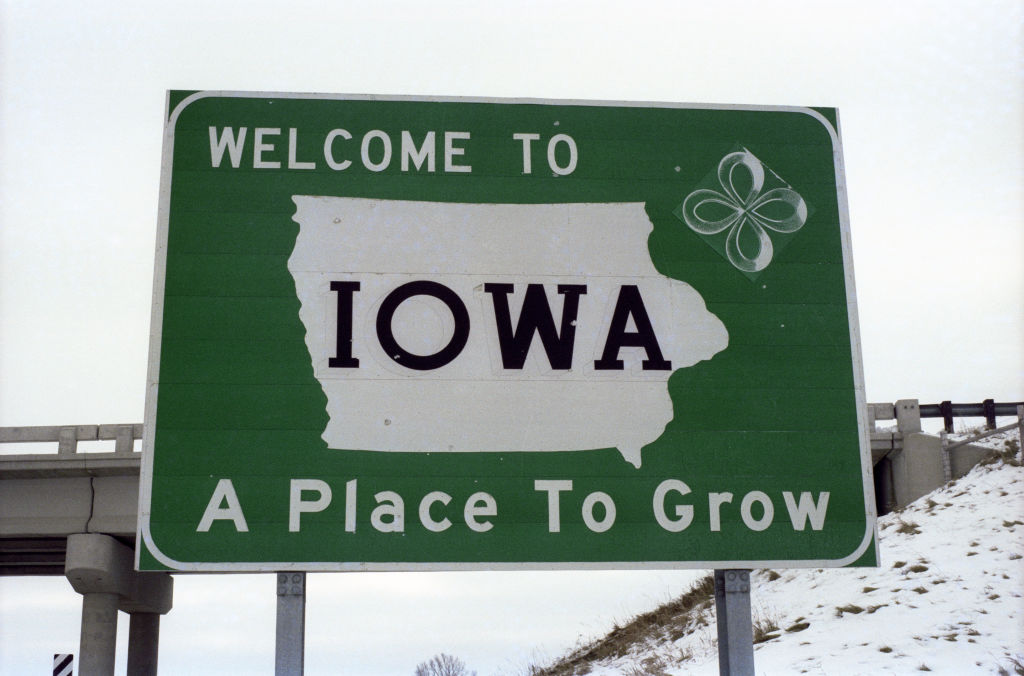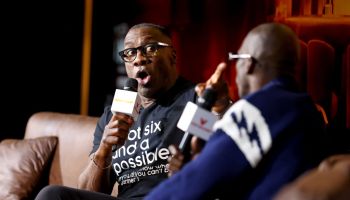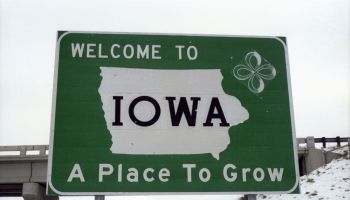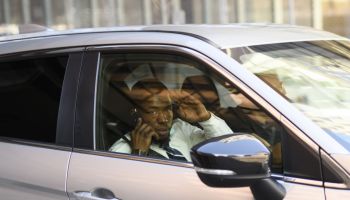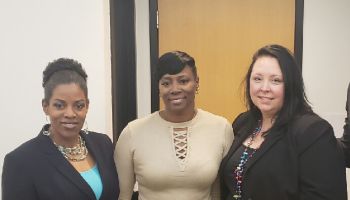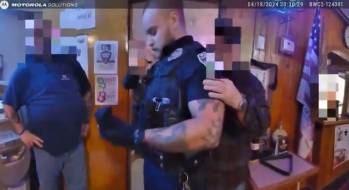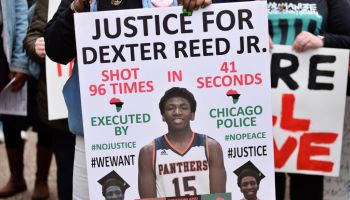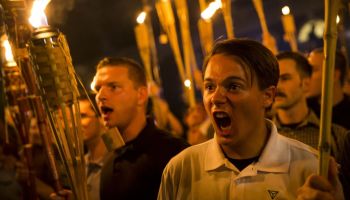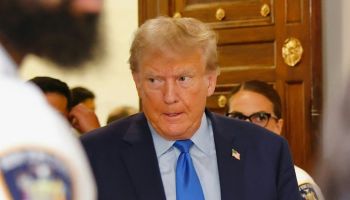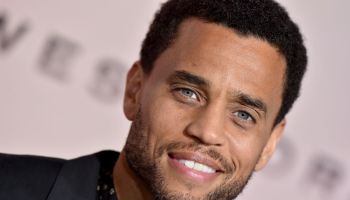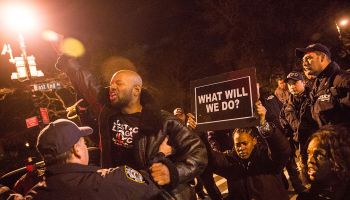Last week, President Barack Obama had his first State of the Union Address of his second term. In order to ensure that Americans understand his priorities as well as garner their support to facilitate turning his proposals into law, White House officials met with members of the media (pictured above) to speak to the President’s “Plan for a Strong Middle Class and a Strong America.” NewsOne was in attendance and made sure to get them to speak on the economy, education, and gun violence as it relates to the Black community.
RELATED: SOTU: President Lays Out Ambitious Agenda For Second Term While Republicans Sulk [WATCH HERE]
Galvanizing Economy Through Middle Class
The core of President Obama’s plan is centered around the middle class, who he calls the “engine of economic growth.” By restarting that engine due to investments in education, clean energy, and manufacturing, the President believes that the economy will strengthen and grow.
This component of the President’s plan is of particular importance to the Black community.
At one of the most critical periods of the Great Recession, Black male unemployment rose to a staggering 17.5 percent, while Black female unemployment was at 12.7 percent in 2009. And while overall Black unemployment has fallen to 13.8 percent, according to CNN Money, it is still nearly 6 percent higher than the national rate.
While economic experts of unemployment cite racism as one of the key reasons Black unemployment remains nearly double the national average — in addition to lack of education and age — Algernon Austin, a Race, Ethnicity, and Economy director at the Economic Policy Institute, agrees with other experts that one of the key ways the government can impact Black America’s unemployment rate is by creating jobs through infrastructure investment:
“When you have roads and bridges that aren’t falling apart, schools where roofs aren’t leaking, broadband and electrical and water systems that are safe, that allows the nation to be productive in to the future, Austin told BET. “So infrastructure investment today means higher productivity tomorrow, jobs today, and economic growth in the future.”
The Director of the National Economic Council of Jobs Jason Furman told NewsOne that the President is indeed basing part of his job creation plan on this investment in infrastructure.
“The specific thing that the President talked about in the State of the Union was ‘Fix it First,’ and that’s focused on transportation infrastructure that takes an idea we also had in the American Jobs Act that you should make a significant upfront investment in infrastructure but says that you should focus not on ribbon cutting [building new buildings] for new stuff, but on fixing stuff. A lot of experts will tell you that [investing in infrastructure] brings the highest rates of return,” Furman said.
Living Above the Poverty Line
Another opportunity to improve the economy is by raising the minimum wage from the federal rate of $7.25 per hour to $9 an hour, because the President believes that anyone who works a full day shouldn’t be living below the poverty line.
Since the President made this ambitious announcement, some critics say that enforcing the higher rate will make it even harder for small business owners to employ American workers and may encourage them to continue outsourcing their labor.
Furman, though, says the President has already anticipated this hurdle by building in a number of calculated tax breaks to relieve business owners and encourage them to hire workers. “The President has a great track record for cutting taxes for small businesses,” he said. “He’s done it more than 18 times and we’ve got a bunch of proposals for more tax cuts for small businesses, things like expanding the tax credit for health insurance, expanding your ability to expense your investments rather than depreciate them over time — zero capital gains for investments and small businesses — so there are a lot of small business tax cuts.”
Why does it matter that the emphasis is being put on small businesses?
Because Black-owned businesses tend to hire Black workers at a much higher rate than other businesses. According to the Gazelle Index, which is a national quarterly survey that tracks minority, female, and non-minority small business owners, Black-owned business’ employees were 64 percent Black in 2007.
In other words, even though Black-owned businesses accounted for 7.1 percent of small-business owners in the last census, they employed 589,460 Black workers.
Therefore, the Gazelle Index — along with a research paper on the issue of Black unemployment conducted by the Institute for Research on Poverty — comes to one solid conclusion:
As these businesses grow and their employment capacity increases, two out of every three workers hired will be Black.
Conclusion – one of the most-effective strategies for lowering Black unemployment is to increase support for Black businesses.
From the Cradle to Career
During President Obama’s State of the Union speech, he declared that giving America’s children universal access to pre-school was one of his Administration’s key cornerstones:
“Study after study shows that the sooner a child begins learning, the better he or she does down the road. But today, fewer than 3 in 10 4-year-olds are enrolled in a high-quality preschool program. Most middle-class parents can’t afford a few hundred bucks a week for a private preschool. And for poor kids who need help the most, this lack of access to preschool education can shadow them for the rest of their lives. So tonight, I propose working with states to make high-quality preschool available to every single child in America. That’s something we should be able to do.”
Watch the President discuss the importance of pre-school here:
And indeed, research confirms the President’s assertions that early education has a direct impact on graduation rates.
And for African-American males, who lag behind Whites (78 percent) and Latino males (58 percent) in graduation rates at 52 percent for the 2010 graduating class, according to the Associated Press, this initiative would have an especially significant impact on our community.
According to the National Education Association, graduation rates increased by 80 percent when students had access to pre-kindergarten and small class sizes for the first four years of their academic careers. The impact of the early education along with class sizes of 18 or fewer children had an even bigger impact on low-income minority children:
To maximize long-term benefits, they recommend beginning small classes in kindergarten or pre-kindergarten where students spend the entire school day in a small class and maintaining small classes for at least three consecutive years.
Attending small classes for four years (K–3) increased the odds of graduating by about 80 percent for all students. The effect was even greater for low-income students (students receiving free or reduced-price lunches who more than doubled their odds of graduating).
Roberto Rodriguez (pictured right), special assistant to the President for education policy, told NewsOne that the President’s intentions for pre-school are really part of an entire strategy to make American students become internationally competitive again:
“The President’s charge here is really to move us from 28 out of 38 states internationally back toward the top in terms of the number of 4-year-olds we can serve in public pre-school.
“We’ve also looked at the investments that are necessary even before that age, which are looking at investments in our voluntary home visiting program.
“This is having social workers and nurses and other professionals spending time in the early years to help support early child development. The President also talked about the need to modernize our education system and our high schools in particular so that young people have access to rigorous and relevant experiences that will prepare them for college and for work, [and] he contrasted the United States to places like Germany, where well over half of their high school students have options that they can choose to get deep work-based experiences and earn what is the equivalent of our Associates Degree at their point of graduation.”
Higher Education & HBCUs
In 2010, the President signed an executive order to renew the White House pledge to support Historically Black Colleges and Universities (HBCUs) with $1 billion in aid to strengthen these institutions. Rodriguez told NewsOne that the President intends to continue supporting HBCUs in addition to supporting overall academic African-American excellence.
“The President really believes that Historically Black Colleges and Universities are important elements along the pipeline to increase and improve our college
retainment rate as a country. Particularly for African-American students, they [HBCUs] are places where our young people are able to go and really accelerate their completion rates, but there also places that are kind of catalysts for the broader educational support for kids even in high school and early childhood
education. These communities where our HBCUs are working really see the impact and the effect of that faculty on the educational benefit.
“So the President’s invested heavily. You know part of the reform that he ushered in through the Health Care and Education Reconciliation Bill back in 2010 invested over a billion dollars in our minority-serving institutions. The President will continue to support those institutions and he wants to also broaden our focus on success and attainment for our African-American students and community.
“This is why he promulgated a new executive order last year to establish a White House initiative on educational excellence for African Americans and the design of that initiative is really focused on doing more to accelerate outcomes in early childhood, K-12, and higher ed — not just focused on HBCUs.”
Protecting Our Children By Stopping the Violence
The President’s hometown of Chicago is an unfortunately perfect example of what many of our communities have devolved into when it comes to the number of Black youth that have been lost due to gun violence. And according to the Associated Press, the embattled city has already seen more than 40 homicides for 2013.
While the issue of gun control was dragged to the front of the line with the unspeakable school massacre in Newtown, Conn., clearly many Black communities have been dealing with the tragedy of gun violence for decades.
One of the most-recent high-profile murders is not just of student Hadiya Pendleton, who was shot and killed a mile from the President’s home, but of 18-year-old Janay McFarlane (pictured left), a Mother of a 3-month-old, who was reportedly shot in the head as she made her way to the store on Friday.
Ironically, McFarlane’s 14-year-old sister was reportedly seated behind the President on the same day she was killed.
What was the President discussing?
Gun Control.
RELATED: Read NewsOne’s Coverage of Hadiya Pendleton’s Death
Watch news coverage of McFarlane’s passing here:
In light of these events, NewsOne pointedly asked Vice President’s Joe Biden‘s Chief of Staff Bruce Reed to discuss what the President is going to do to stem gun violence in the African-American community. While Reed didn’t necessarily seem to have a novel answer to this grave problem, he did acknowledge that the issue is something the Administration is diligently working to solve.
“The tragedy in Newtown brought attention to this issue, but there’s the equivalent of a Newtown going on every day in terms of deaths of guns across the country. And it’s been particularly pronounced in a number of your urban areas. And the top priorities for the mayors and police chiefs across the county in the big cities is first background checks, which makes it much harder for criminals to get their hands on guns in the first place.
“Second, the gun trafficking because a lot of cities have pretty tough gun laws like Chicago but they can’t control what’s outside their borders. So, for example, if you can go to the suburbs of Chicago and a girlfriend of a gang member can buy a gun legally at a gun store and sell or give it to the gang member. Then that’s how guns make their way in to the heart of a lot of these hardest hit places.
“So mayors and police chiefs want to do background checks everywhere and make it easier for prosecutors to go after the straw purchasers so you can shut down the illegal gun trade and then more police on the street generally is a one of the most-effective prevention strategies to keep communities safe and prevent crime from happening in the first place.”
When NewsOne asked whether the President was considering increasing resources to crime-ridden communities so that our youth would have more options to not engage in — or be the victim of — violence, Reed said:
“The President laid out a number of proposals during the State of the Union that addresses the broader question of inequality. And that will make it easier for communities to do other things. So for example, he proposed universal pre-k. A lot of community resources, anything we do to make those local budgets a little stronger whether its cop money, pre-school money, it makes it easier for them to afford the after-school programs that these places need.
“And I think there is a lot more to do to prevent gang violence in the long haul, but what’s most worrisome about guns and the illegal gun trade is that they make every problem more acute.
…
“If there’s a gang war with guns, it does a lot more damage than the chains and knives of long ago, so no question, we are treating the symptoms of
the problem not the core of the problem but as many have said over the years, guns make this condition much worse.”
In the coming months, time will tell if Senate and House Republicans will work together with the President on passing through the key centerpieces of his legislation, but either way, it is clear that much of the proposals the President is looking to pass will make a major impact on our ability to progress and grow as a people.
